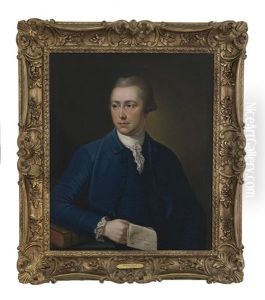Giuseppe Marchi Paintings
Giuseppe Marchi was an eminent Italian Jesuit priest, archaeologist, and numismatist, born in 1795 in Tolmezzo, Italy. His contributions to the field of archaeology, particularly in the study of Christian antiquities, have been significant. Though not as widely recognized as some of his contemporaries, Marchi's work laid foundational stones for the archaeological methods and studies that would follow in the exploration of early Christian Rome and its environs.
After joining the Society of Jesus, Marchi's intellectual pursuits led him to Rome, where he became deeply involved in the study of ancient artifacts, inscriptions, and coins. Under the guidance of his mentor, Father Angelo Secchi, Marchi developed a keen interest in the Christian catacombs of Rome, which were then being systematically explored for the first time. His dedication to the field was remarkable; he spent extensive periods documenting, mapping, and studying the catacombs, contributing to the early phases of Christian archaeology as a distinct discipline.
Marchi is perhaps best known for his pioneering work in the study of ancient Christian inscriptions and artifacts. His meticulous documentation and analysis helped to unravel the complex history of early Christian communities in Rome. Furthermore, as a numismatist, he made significant contributions to the understanding of the historical context of coinage and its use in ancient times, which provided invaluable insights into the socio-economic conditions of early Christian societies.
Despite his profound contributions, Marchi's work was often overshadowed by the burgeoning field of archaeology and its many luminaries. Nevertheless, his legacy is preserved in the detailed records and publications he left behind, which continue to serve as essential references for scholars in the field. Giuseppe Marchi passed away in 1860, leaving behind a rich legacy that continues to inspire and inform the study of Christian archaeology and numismatics.

